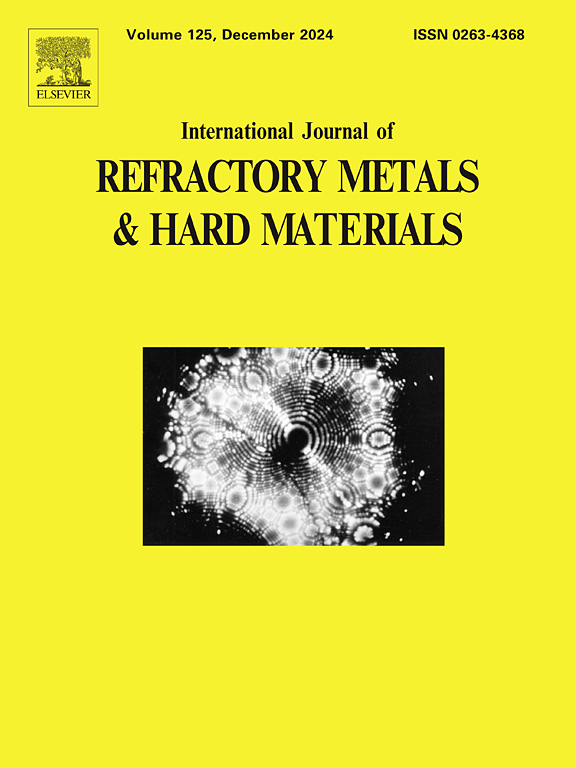纳秒紫外激光诱导硬质合金亚表面损伤机理及力学响应
IF 4.2
2区 材料科学
Q2 MATERIALS SCIENCE, MULTIDISCIPLINARY
International Journal of Refractory Metals & Hard Materials
Pub Date : 2025-07-16
DOI:10.1016/j.ijrmhm.2025.107334
引用次数: 0
摘要
激光加工引起的亚表面损伤严重影响硬质合金的力学性能和使用寿命。为了阐明激光与材料相互作用的机制,本研究通过纳秒级紫外激光烧蚀、角度抛光、维氏压痕和多尺度表征技术,系统地研究了WC/12Co的表面和亚表面损伤。结果表明,烧蚀形貌以再固化和沉积区为特征,揭示了由微孔、破裂、裂纹和热影响区(HAZ)组成的亚表面损伤机制。激光脉冲有效能量是决定烧蚀效率的关键参数。在热影响区,硬度和断裂韧性的降低呈梯度分布,并局限于激光脉冲能量扩散范围内。这些发现为优化激光加工参数以减轻硬质合金的亚表面损伤提供了有价值的见解。本文章由计算机程序翻译,如有差异,请以英文原文为准。
Nanosecond UV laser-induced subsurface damage mechanism and mechanical responses for cemented tungsten carbide
Subsurface damage induced by laser processing critically influences the mechanical properties and service life of cemented tungsten carbide. To elucidate the mechanisms governing laser-material interactions, this study systematically investigates surface and subsurface damage in WC/12Co through nanosecond UV laser ablation, employing angle polishing, Vickers indentation, and multi-scale characterization techniques. The results demonstrate that the ablative morphology, characterized by re-solidified and deposition area, provides insights into subsurface damage mechanisms comprising micro-pores, broken, cracks and the heat-affected zone (HAZ). Effective laser pulse energy is a key parameter in determining ablation efficiency. In the HAZ, reductions in hardness and fracture toughness exhibit a gradient distribution, localized within the laser pulse energy diffusion range. These findings provide valuable insights for optimizing laser processing parameters to mitigate subsurface damage in cemented tungsten carbide.
求助全文
通过发布文献求助,成功后即可免费获取论文全文。
去求助
来源期刊
CiteScore
7.00
自引率
13.90%
发文量
236
审稿时长
35 days
期刊介绍:
The International Journal of Refractory Metals and Hard Materials (IJRMHM) publishes original research articles concerned with all aspects of refractory metals and hard materials. Refractory metals are defined as metals with melting points higher than 1800 °C. These are tungsten, molybdenum, chromium, tantalum, niobium, hafnium, and rhenium, as well as many compounds and alloys based thereupon. Hard materials that are included in the scope of this journal are defined as materials with hardness values higher than 1000 kg/mm2, primarily intended for applications as manufacturing tools or wear resistant components in mechanical systems. Thus they encompass carbides, nitrides and borides of metals, and related compounds. A special focus of this journal is put on the family of hardmetals, which is also known as cemented tungsten carbide, and cermets which are based on titanium carbide and carbonitrides with or without a metal binder. Ceramics and superhard materials including diamond and cubic boron nitride may also be accepted provided the subject material is presented as hard materials as defined above.

 求助内容:
求助内容: 应助结果提醒方式:
应助结果提醒方式:


